Content
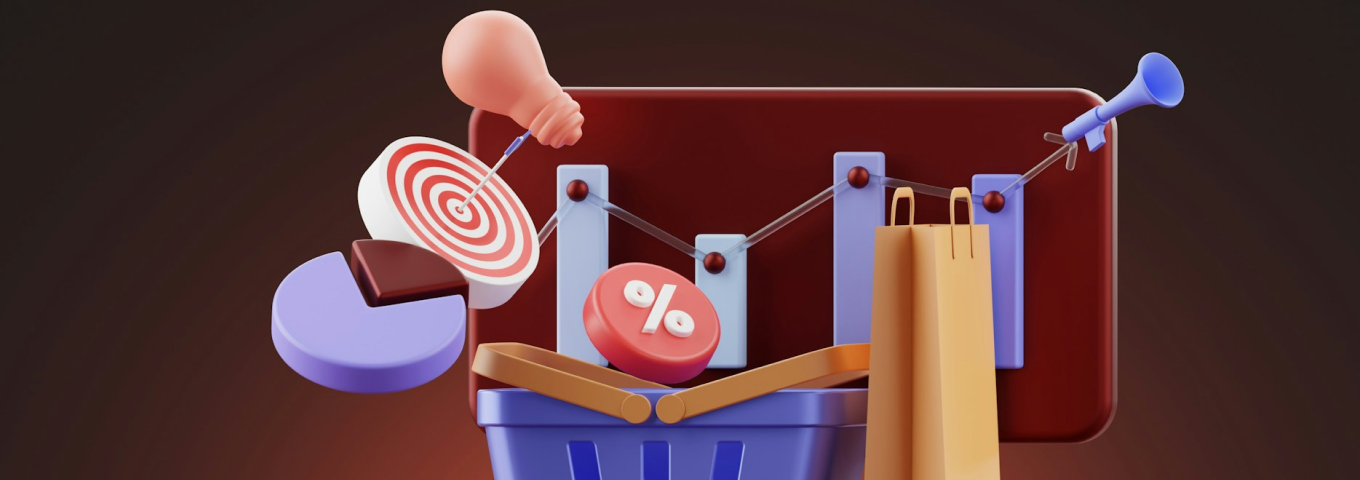
Pay-per-click (PPC) advertising is a foundational pillar of digital marketing for eCommerce brands like yours. It's a ROI-oriented solution with proven impact. eCommerce PPC delivers fast, visible results and works effectively across all stages of the marketing funnel.
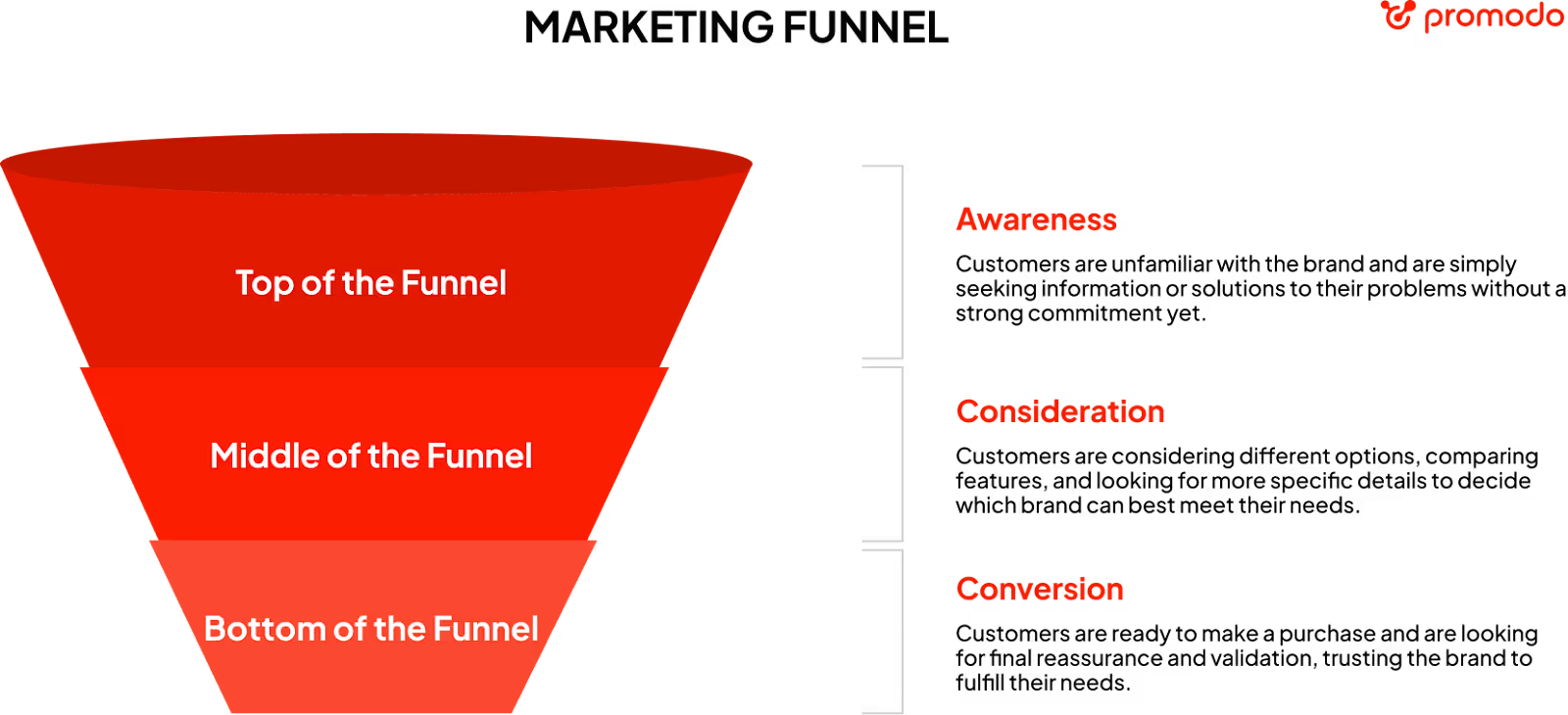
It’s a smart choice for launching new products, increasing sales of bestsellers, or clearing out stock that needs to move. This flexibility makes it a valuable tool for nearly any eCommerce goal.
In this guide, we’ll explore what PPC for eCommerce sites entails, how it functions, and why it's a powerful channel for increasing sales. Keep reading to uncover the essentials of eCommerce PPC marketing.
If you’re looking for expert support, explore our eCommerce PPC management services, or get in touch with our team directly at <a href="tel:+442031376681">+44 (0) 20 313 766 81</a>.
Pay‑Per‑Click (PPC) for eCommerce is a performance‑based advertising model where online retailers pay only when a user clicks on their ad. This strategy enables eCommerce brands to appear in front of actively searching customers, driving qualified visits to product pages. With platforms like Google Ads, Bing, Meta, and Instagram ads, eCommerce PPC delivers immediate visibility and measurable results.

The best part is its flexibility. Since the results are easy to analyze since day one, your team can tailor messaging, product visuals, and calls to action, targeting shoppers at different funnel stages and seeing what works best. PPC for eCommerce sites gives you full control over budget, bidding strategy, and analytics unlike traditional media.
Here is what PPC ads might look like:
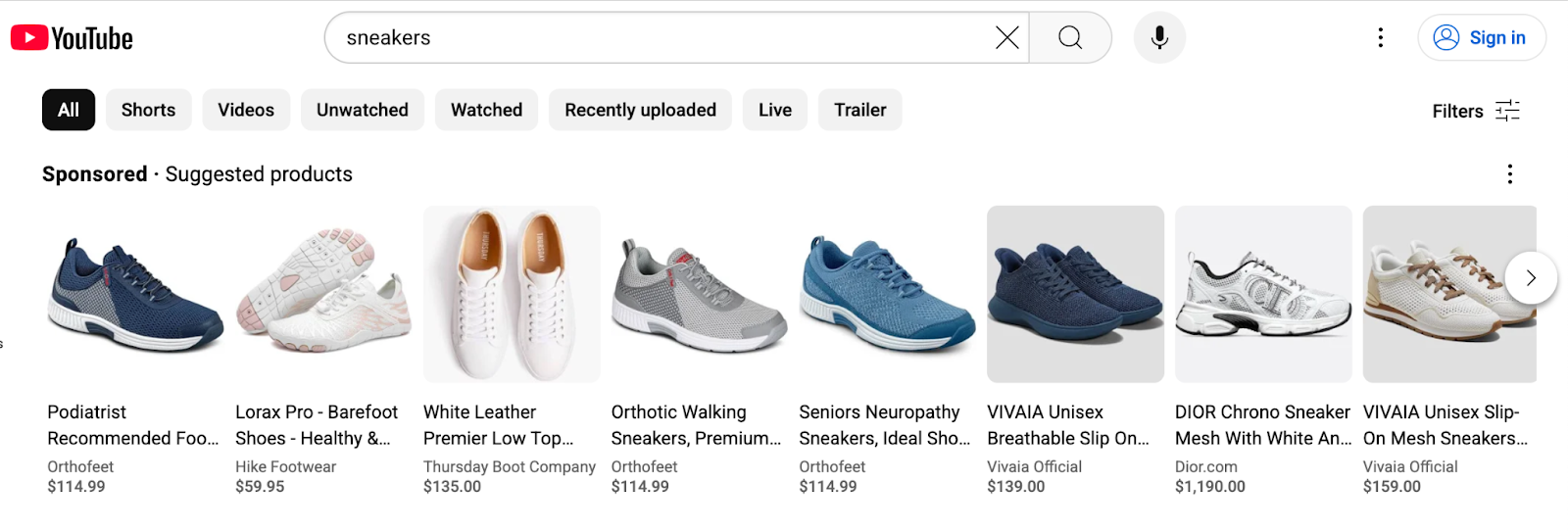


eCommerce PPC delivers tangible benefits:
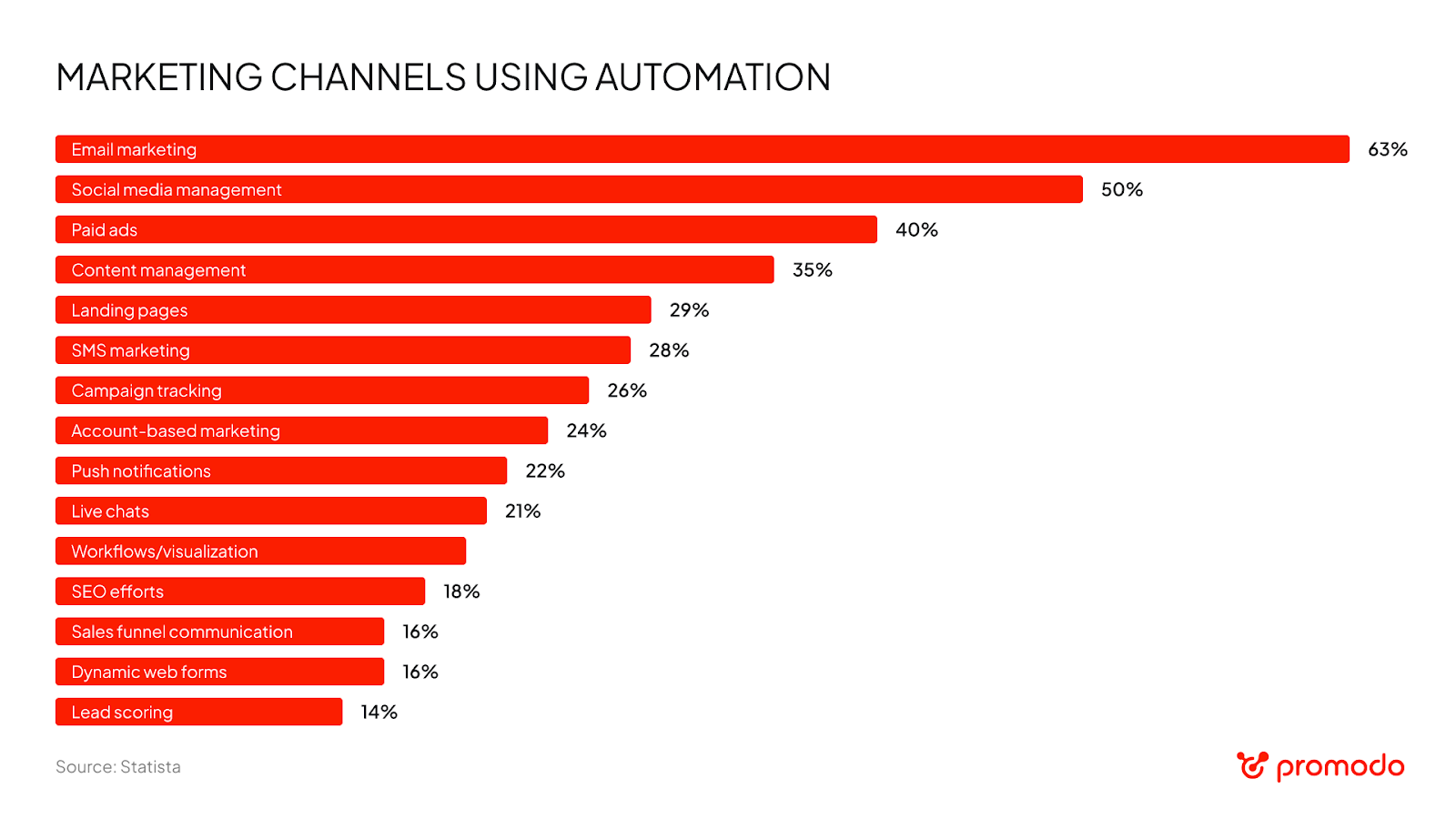
[[ROW-START]]

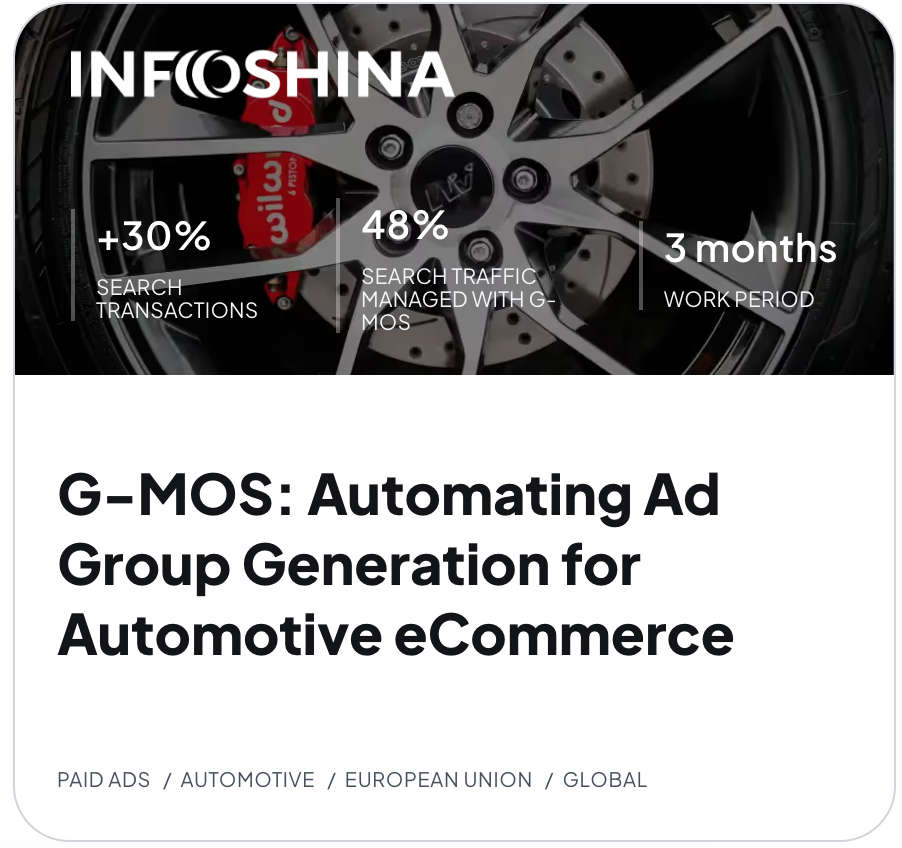
[[ROW-END]]
eCommerce brands typically rely on a diverse mix of PPC formats to optimize reach and conversions:
Shopping ads (or Product Listing Ads) showcase product image, title, price, and brand—making them highly visible and conversion-oriented. They're ideal for showcasing your catalog and capturing high-intent traffic directly from search engines.
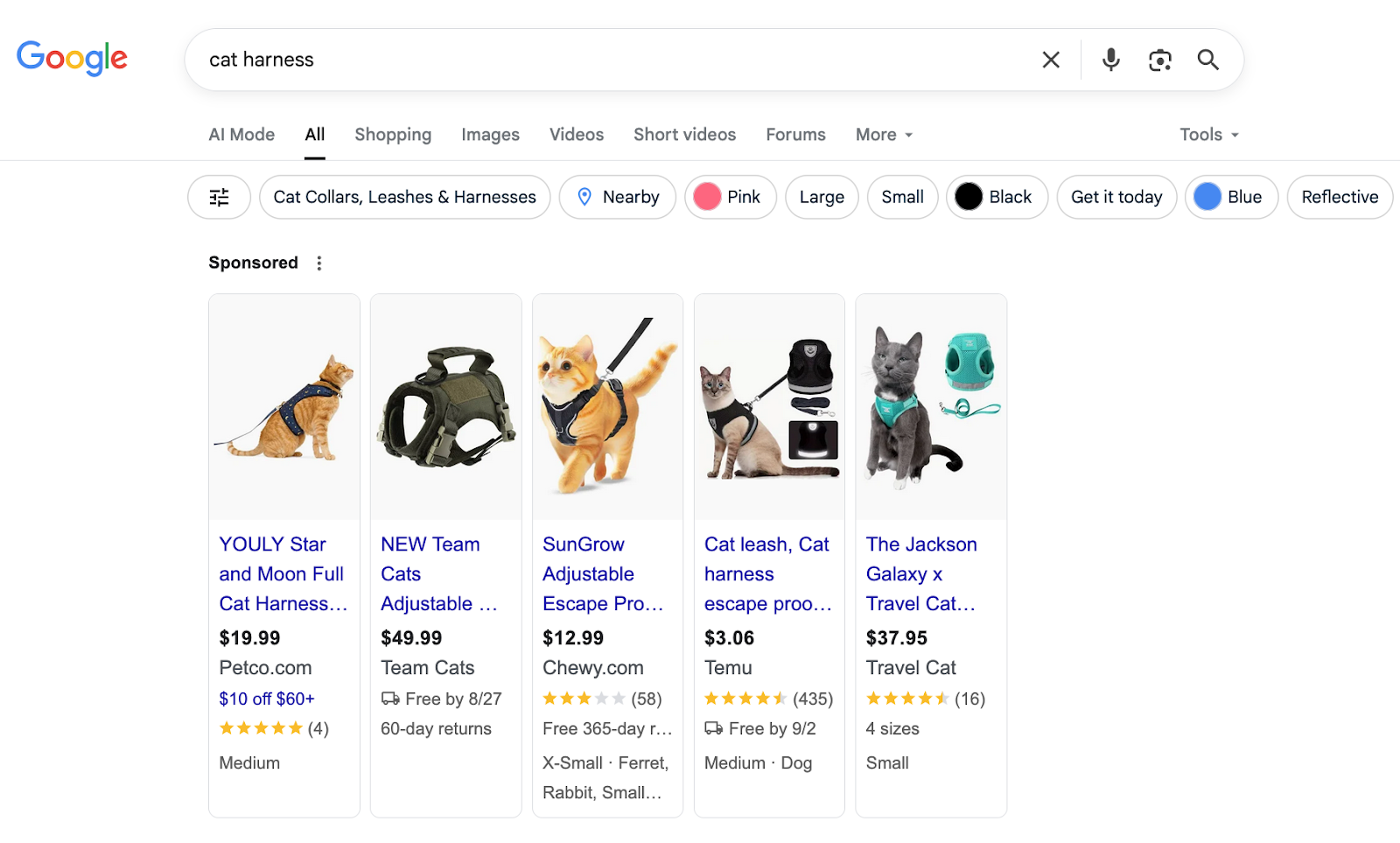
Text-based search ads appear when users enter relevant queries. With precise keyword targeting and flexible bidding, PPC for eCommerce via search allows you to present the right message at the right moment—especially when products are in demand.

Search ads can look in all sorts of ways, because platforms allow to add ad extensions:




These visually rich ads appear across the Google Display Network and other sites. Display ads are excellent for awareness and brand recall. Studies show consumers exposed to display ads are 155% more likely to search for your brand, and display campaigns are over 4× cheaper in CPC compared to search.

Here’re the common display ad types:
Interactive ads that expand when clicked or hovered over. They often open into a full-screen view showing videos or image carousels.
Remarketing helps you reconnect with users who previously visited your site but didn’t buy. With tailored messaging and dynamic product feeds, these campaigns can significantly lift conversions—studies report retargeting increases purchase likelihood by up to 70%. They can appear in all sorts of formats, but they are very typical for ads on social platforms.
Social PPC plays a key role in product discovery, audience engagement, and driving ecommerce conversions through visual storytelling and hyper-targeted ad delivery. These platforms offer a rich mix of ad formats—carousel, video, collection, and story ads—designed to match user behavior and intent across different funnel stages.
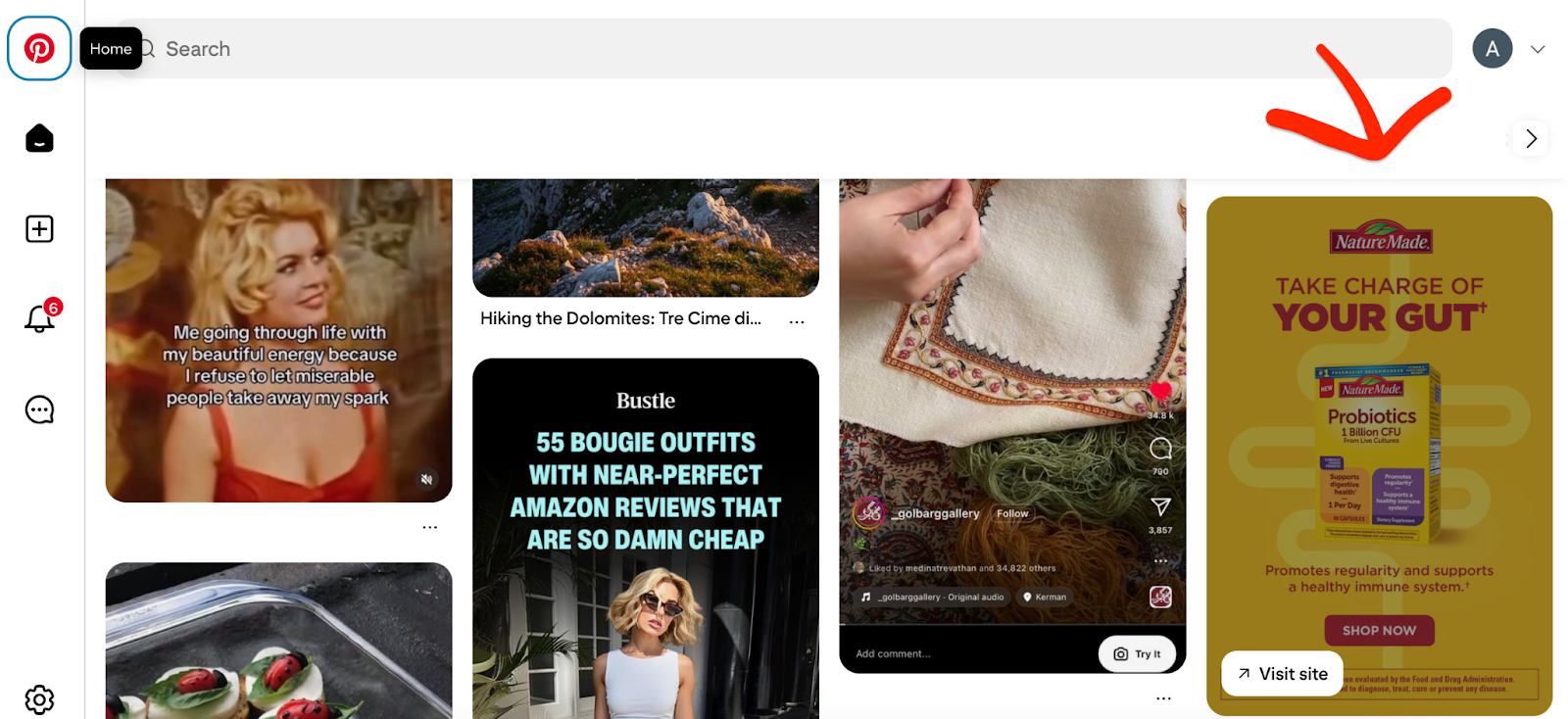
So honestly, the sky is the limit. What platform you choose to run ads will strongly depend on your target audience and offering. For example, if you sell lawnmovers, your safe bet will be Facebook ads, if you specialize on wedding accessories or decorations, then Pinterest would work well for you, if you have a gamer PC business, then you can try X or Reddit. Due to the precise targeting these platforms offer, the choice is obviously broader - Instagram or TikTok can be used for all these categories too. You just need thorough target audience analysis to know exactly where your customer prefers to scroll.

eCommerce thrives with Google Shopping campaigns. We won’t go in detail here, because we covered their setup in detail in this article.
While the setup process will vary depending on the platform (Google, Meta, TikTok, etc.) and the type of campaign, there are some key steps that apply across the board. These steps are the foundation of any successful eCommerce PPC strategy.
Here’s what you need to cover to make sure your eCommerce PPC setup is solid from the start:
Before you touch a single ad platform, take the time to define your goals. Are you trying to sell a new product line? Move discounted stock? Boost repeat purchases?
Once your goal is set, you’ll need to track the right metrics to measure success. For eCommerce brands, these typically include:
To help you track these, we’ve created a free downloadable PPC reporting template and a detailed guide explaining each of these eCommerce PPC metrics in plain language.
The right platform for your campaign depends on what you're trying to sell and who you're selling to. Start with 1–2 platforms that best align with your goals and audience. Trying to do everything at once can dilute your efforts and budget.
When setting up campaigns, especially in platforms like Google Ads, it’s important to keep things organized. Think of each campaign like a “bucket” with a specific focus—for example:
This helps you control your budget and bidding more precisely, making it easier to see what’s working and what isn’t. Campaign structure may sound technical, but keeping things logical and separated by theme or goal will save you time and money in the long run.
Your ads are what people will see—so they need to stand out. Use clear images, short and punchy headlines, and highlight what makes your product special (free shipping, limited edition, new arrival, etc.).
For eCommerce, product feeds are especially important. These are files that send your product data (price, availability, image, etc.) to platforms like Google Shopping. If your feed is messy or incomplete, your ads may not run properly—or at all.
Promodo’s Feed Optimizer tool helps eCommerce businesses clean and structure their feeds automatically, ensuring your products are shown correctly and more often in search results.
If you will decide to add something else to Google Shopping, check out our compilation of great ad ideas:

Bidding means telling the platform how much you're willing to pay for a click or conversion. Sounds simple, but it’s actually one of the most complex parts of eCommerce PPC. The way you bid will affect how often your ads show up, how much they cost, and whether they reach the right people.
You can choose from manual bidding (you set the cost) or automated bidding (the platform adjusts your bids to meet a goal—like maximizing conversions or hitting a target ROAS). Choosing the right strategy depends on your budget, campaign type, and goals.
If you're unsure where to start, don’t stress—we explain everything step by step in our full guide to bidding. Read our Bidding Strategy in Google Ads article →
To know if your ads are actually working, you need to track what happens after someone clicks. This includes actions like:
Platforms like Google Ads and Meta offer built-in conversion tracking, but you’ll want to double-check that these are installed properly and send accurate data. Connecting your PPC campaigns to tools like Google Analytics or GA4 gives you deeper insights into behavior and sales performance.
PPC is not a “set it and forget it” channel. Even the best campaigns need regular adjustments. Every few days or weeks, check in on performance and look for:
Try new headlines, images, and offers through A/B testing. Adjust bids or exclude poor-performing search terms. Small changes can have a big impact when done regularly.
To know how your numbers compare to others in your niche, explore our article on PPC benchmarks.
Running ecommerce PPC campaigns takes time, data, and experience—especially when you’re managing multiple product categories, audiences, and platforms. If you're unsure where to start or want to avoid expensive mistakes, working with an experienced eCommerce PPC management company will be a huge relief.
Our team handles everything from campaign structure to bidding, creative testing, and ongoing optimization. We’re here to help you get the most out of your budget and drive real sales—not just clicks.
Learn more about how your business can grow faster.
Even the best strategies can falter if common pitfalls aren’t avoided:
More about what that means and how to be cautious in our article about common PPC mistakes.
eCommerce PPC offers unmatched control, measurability, and scale. A well-designed setup, paired with vigilant optimization and clear KPIs, will elevate your traffic, conversions, and profit.
If you’re just a beginner, start with small budgets, AB test your ads and explore our blog for expert guidance.
If you’d like to grow faster, we’re here to offer you help, guidance and results. We are certified Google Ads and Meta Ads partners, and our expertise in PPC is unmatched - proven by our happy clients all around the world. Just reach out, and we’ll take it from there.
You may also like
Choose quality and trusted services to improve the presence of your company on the Internet, and feel free to contact our UK team if you have any questions.

We interviewed Kateryna Husachenko, eCommerce Brand Strategist at Promodo to discuss the most relevant options that would best match companies’ needs at various

Global statistics show that online sales in the fashion industry account for 20% and expected to intensify.

Unlike cold calls that often get ignored by their recipients, PPC puts your offer directly in front of motivated sellers actively looking for help.

Using a pay-per-click campaign brings in high-quality leads for financial institutions and boosts the return on investment for your marketing efforts.
We at Promodo are ready to help you improve your performance across all digital marketing channels.
Get started
